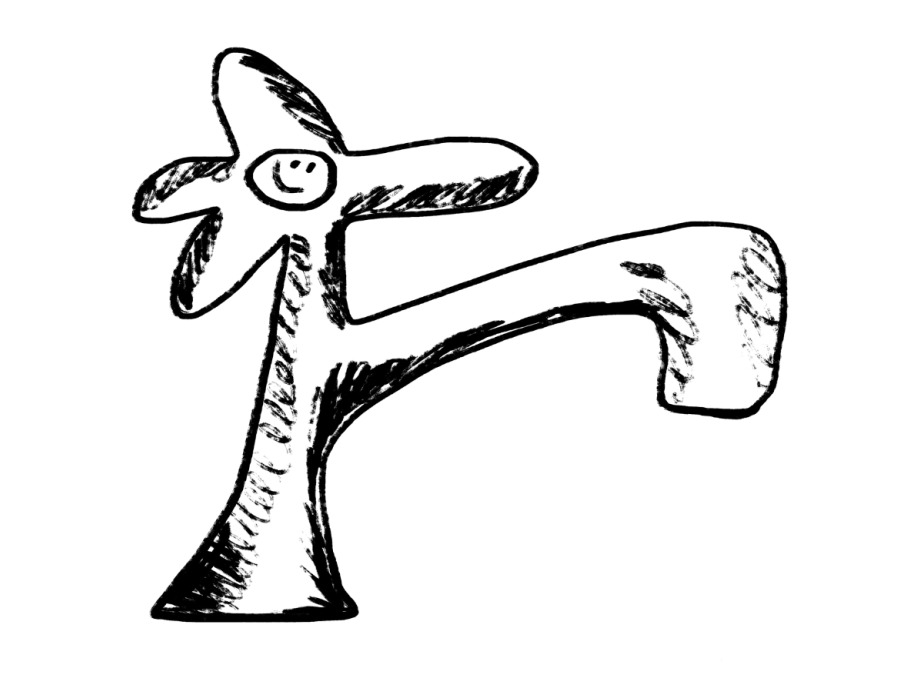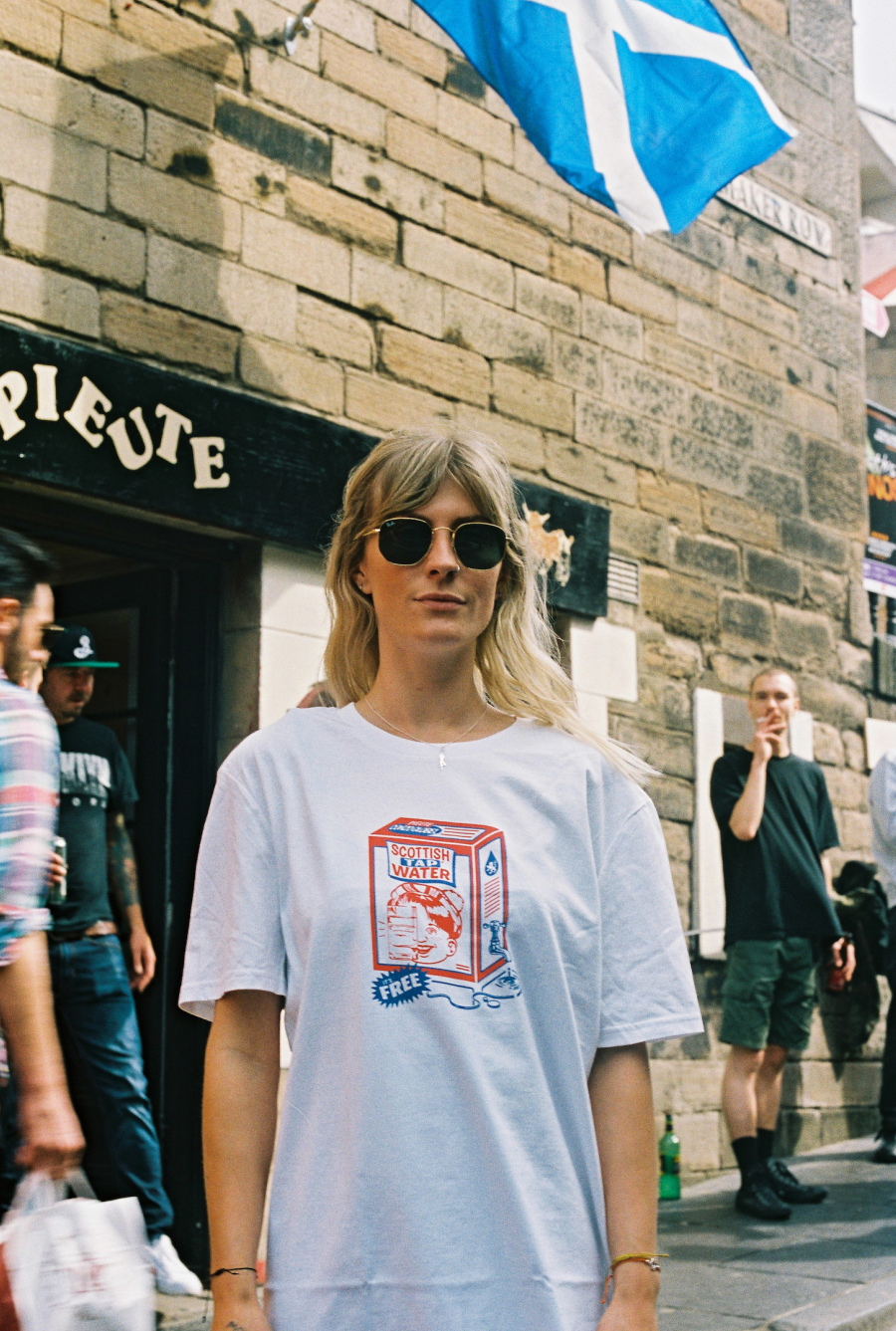Love on Tap: The Quiet Miracle of Scottish Tap Water
You’ll often hear “water is life”, but the truth is much more fun: water is living. That we pay it such little attention, writes Douglas Rogers, is simultaneously one of modernity’s great achievements, and a sign of how estranged we are from ourselves
I have a history with tap water. I grew up between parents in Edinburgh and London, and one of the more indisputable polarities to build my fledgling sense of world and self around was water.
In London it was brash, borderline fiery – you knew all about it when you took a sip. In Edinburgh it went down smooth, gulp after gulp; run the tap a bit and the glacial cold would hit me with a jolt of pleasure, and a vague sense of almost spiritual gladness to be part of such a world that sang, faintly, of mountains.
Water has a strange relationship with taste. Its reputation as flavourless is mistaken – unlike almost any other substance, we mainly taste water through absence. As it flows across our tongues it clears away saliva, essentially allowing us to taste ourselves (faintly sour, it transpires). This riddle of water’s flavour runs much deeper, though. The obvious divide is soft and hard, essentially a question of mineral concentrations: the latter relatively thick with calcium and magnesium, the former light on passengers. But this apparent answer is just one whorl in a sprawling ecology of experience.

Illustration: Thea Bryant
Scotland’s drinking water is largely derived from ‘surface water’: lochs, rivers and reservoirs which don’t afford much opportunity for mineral-collection. This contrasts with most of England’s greater reliance on aquifers, more mundanely known as ‘groundwater’. This more mysterious provenance can imbue your glass’s contents with all kinds of notes, depending on the regional geology and number of decades, centuries or millennia spent underground.
Similarly to its upstart rival wine, this means tap water can lay real claim to ‘terroir’ status. And like with any regional delicacy, this means interlacing not just with that land’s minerals but its culture. Scottish water culture takes a lot of shapes. Aside from the noble offshoots of whisky (literally ‘the water of life’) and Irn-Bru, the most prominent of these is Highland Spring. The distinctive plastic bottles, holding groundwater from the non-Highland Ochil hills, are neatly illustrative of the $270 billion bottled water industry, the extractive cynicism of which hardly needs restating.
These mega-corporations turn a necessity into a commodity. More novel is a growing movement to transmute it even further, into a luxury good. ‘Water sommeliers’ have yet to make much of a splash in Scotland, but down in good old London at ‘water boutique’ Fine Liquids you can buy award-winning Welsh water at £8 a bottle, or limited-edition ‘Jewelery Water’ from Japan for £366.
The luxury water phenomenon has been gathering steam since 2020 – a trend which isn’t hard to link to spiralling, neo-Victorian wealth inequality. One of the many things I personally find regrettable about this scene is the way it rarefies a strand of culture which I’d much rather see democratised; but thankfully, in Scotland the latter current still prevails.
You might have seen adverts for Scottish Water lately. They’ve been on TV, and at least one of Edinburgh’s trams. My favourite encounter was before a cinema screening of Dune: Part Two. Corny rhyming couplets unsurprisingly extoll the company’s virtues. But here’s the thing: they’re kind of right.
Fortuitous geography is not the sole determinant of Scotland’s low-key legendary tap water – just think of the many US towns blighted by ‘boil water advisories’. Beyond just making sure it’s safe and reliable, Scottish Water also run tests on their namesake at a rate of one per minute. These tests include a team of 23 tasters, based in a specialist unit at Heriot-Watt University: water sommeliers for the people! And they really are for the people. As SW’s campaign takes pains to underline, it’s 'owned by you'. This is not a natural fact: Thatcherism did its very best to privatise our water system as it had done in England and Wales. It only failed thanks to public resistance culminating in a users’ referendum, wherein 97% of 1.2 million votes opposed the move.

A 'Scottish Tap Water' T-shirt by Edinburgh clothing brand Pieute. Photo: Adelle Russell c Pieute
The ensuing fate of English water companies speaks for itself in many tongues: asset-stripping, shocking underinvestment, dodgy flavour, and of course the literal tide of excrement which leaves 14% of English lakes and rivers in ‘good’ condition (compared to 87% in Scotland).
The water we drink has always been politically charged. But already, growing climate chaos is exacerbating this. As of 2024, four billion people experience severe water scarcity for at least one month each year. The UN warns that by 2030 global demand for fresh water will outstrip supply by 40%. And this is less than halfway into what is currently a global heat trajectory of 3°C by 2100.
The scales these numbers conjure, both in terms of human suffering and corporate culpability, are hard to fathom but are hinted at by severe droughts afflicting Mexico, Spain, and South Africa. Last summer saw the arrival of large-scale water conflict in Europe, with many thousands of protestors and police fighting a pitched battle at Sainte-Soline in Western France over ‘water-hoarding’ infrastructure.
Scotland, in a minority which excludes even England, is largely spared such scary prospects. But it’s hard to think these global currents won’t impact, even psychologically, our relationship with water. In times of eagerness to connect with the natural world, I sometimes enjoy remembering that water is not only reminiscent of but actually is that world. When we drink, that world becomes a part of us and vice versa. As the Earth weeps, perhaps we’ll taste it?
Douglas Rogers is a writer, activist, and editor of Raveller: a lifestyle magazine for the Anthropocene.
This article is from issue one of GNAW, our new food and drink magazine dedicated to sharing stories from across Scotland’s food scene. Pick up a free copy from venues across Scotland, and follow GNAW on Instagram @gnawmag
